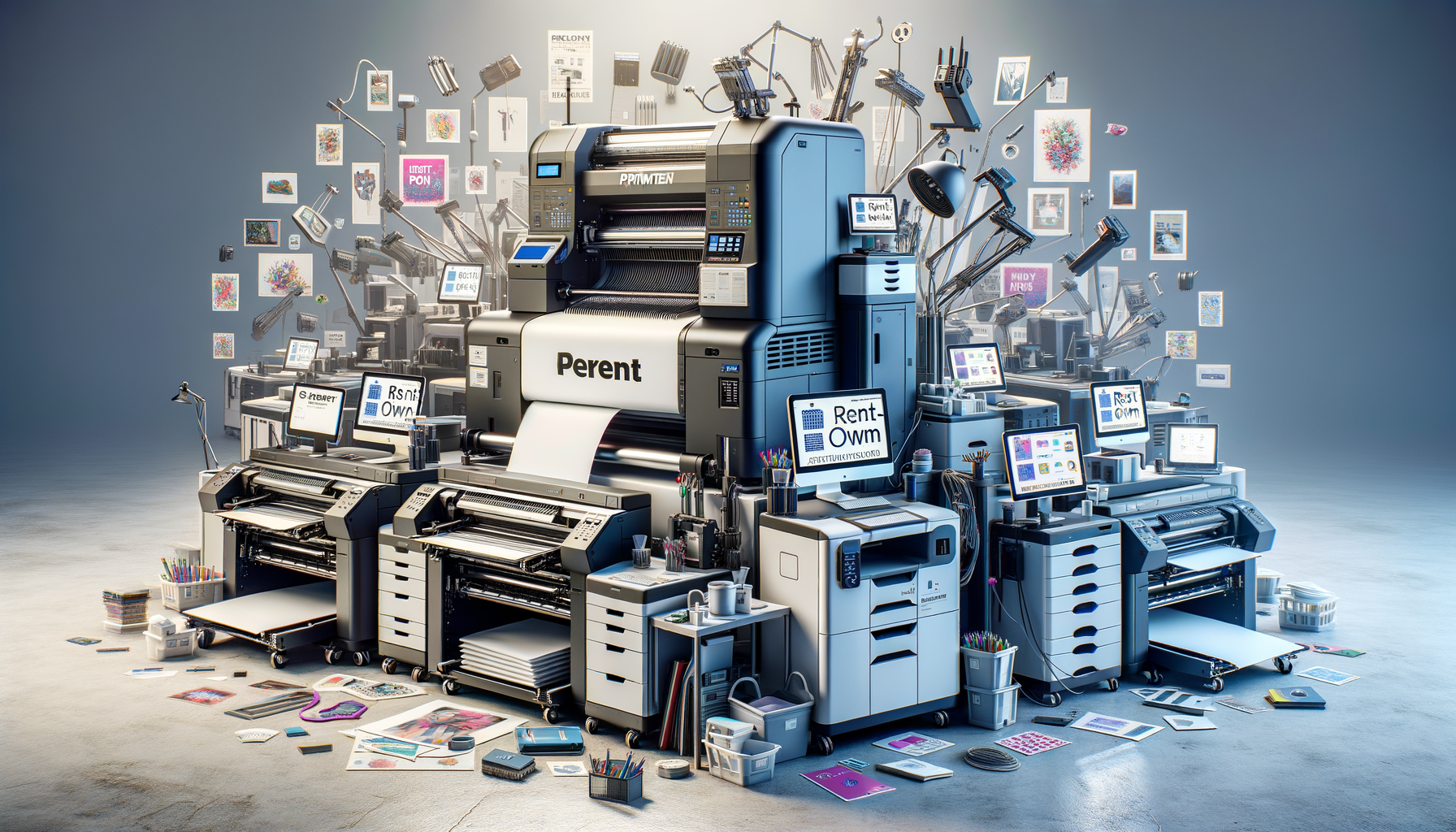
A Comprehensive Guide to Rent-to-Own Schemes for Advanced DTF and DTG Printers
Understanding Rent-to-Own in Printing Technology
In the ever-evolving world of printing technology, Direct-to-Film (DTF) and Direct-to-Garment (DTG) printers have emerged as revolutionary tools for businesses. However, the cost of acquiring such advanced equipment can be prohibitive for many small to medium-sized enterprises. This is where rent-to-own schemes come into play, offering a viable alternative to outright purchase. By allowing businesses to use the equipment while gradually paying towards ownership, rent-to-own options provide a flexible financial solution. This model is particularly beneficial for businesses that are looking to upgrade their technology without the immediate financial strain of a large capital expenditure.
Rent-to-own agreements typically involve a series of monthly payments over an agreed period. At the end of this term, the business has the option to purchase the equipment outright, often at a reduced price. This approach not only helps manage cash flow but also allows businesses to stay up-to-date with the latest technology without the risk of obsolescence. Furthermore, these agreements often include maintenance and support, ensuring that the equipment remains in optimal condition throughout the rental period.
Benefits of Rent-to-Own for DTF and DTG Printers
One of the primary benefits of rent-to-own schemes for DTF and DTG printers is financial flexibility. By spreading the cost over time, businesses can allocate their resources more effectively, investing in other areas such as marketing or staff development. This financial model is particularly advantageous for startups or businesses with limited access to capital.
Another significant benefit is the access to cutting-edge technology. As printing technology continues to advance, having the latest equipment can be a competitive advantage. Rent-to-own agreements allow businesses to upgrade their equipment more frequently, ensuring they can offer the highest quality products to their customers. Additionally, the inclusion of maintenance services in many agreements means that businesses can avoid unexpected repair costs, further enhancing financial predictability.
Moreover, rent-to-own schemes can also provide tax benefits. Depending on the jurisdiction, the rental payments may be considered a business expense, providing a potential deduction. This can lead to significant savings over the term of the agreement, making it an attractive option for many businesses.
Comparing Rent-to-Own with Traditional Leasing
While rent-to-own and traditional leasing may seem similar, they have distinct differences that can impact a business’s decision-making process. Traditional leasing typically involves renting equipment for a fixed period, after which the equipment is returned to the lessor. While this may offer lower monthly payments, it does not lead to ownership, which can be a disadvantage for businesses looking to build long-term assets.
In contrast, rent-to-own agreements provide a clear path to ownership, allowing businesses to eventually own the equipment outright. This can be a significant advantage for businesses that require specific equipment for ongoing operations. Additionally, rent-to-own agreements often offer more flexibility in terms of contract length and payment structures, making them more adaptable to a business’s changing needs.
However, it’s important to note that rent-to-own agreements may come with higher overall costs compared to traditional leasing. Businesses should carefully evaluate their financial situation and long-term goals to determine which option is more suitable for their needs.
Potential Challenges and Considerations
While rent-to-own schemes offer numerous advantages, there are also potential challenges that businesses should consider. One of the primary concerns is the possibility of higher overall costs. The convenience of spreading payments over time can result in a higher total cost compared to a direct purchase. Businesses must weigh the benefits of immediate access to technology against the potential financial implications.
Another consideration is the commitment involved in a rent-to-own agreement. These contracts often require a commitment to monthly payments over several years, which can be a burden if a business’s financial situation changes. It’s crucial for businesses to assess their long-term financial stability before entering into such agreements.
Additionally, businesses should carefully review the terms of the agreement, including maintenance and support provisions. Ensuring that the equipment remains in good working order is essential for maximizing the value of the investment. Businesses should also consider the potential impact of technological advancements, as rapid changes in technology could render the equipment obsolete before the end of the agreement.
Conclusion: Making the Right Choice for Your Business
Rent-to-own schemes for DTF and DTG printers offer a compelling solution for businesses seeking to access advanced printing technology without the immediate financial burden. By providing a path to ownership, these agreements allow businesses to leverage cutting-edge equipment while managing cash flow effectively. However, it’s essential for businesses to carefully consider the potential costs and commitments involved.
Ultimately, the decision to pursue a rent-to-own agreement should be based on a comprehensive evaluation of the business’s financial situation, goals, and technological needs. By weighing the benefits and challenges, businesses can make informed decisions that align with their long-term strategies. For many, the flexibility and access to advanced technology provided by rent-to-own schemes can be a valuable asset in a competitive market.

